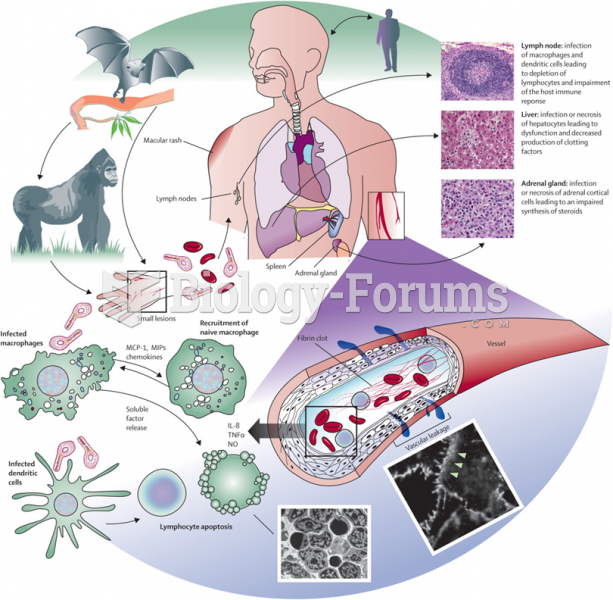Answer to Question 1
D
Hemorrhagic strokes are primarily caused by uncontrolled hypertension and less often by mal-formations of the blood vessels (e.g., aneurysms). Although the exact mechanism is not fully understood, it appears that chronic hypertension causes a thickening of the vessel wall, micro-aneurysms, and necrosis. When enough damage to the vessel accumulates, it is at risk for rupture. The spontaneous rupture may be large and acute or small with a slow leak of blood into the ad-jacent brain tissue. In many cases, blood ruptures or seeps into the ventricular system of the brain with damage to the affected tissue through necrosis or death of brain tissue.
Hemorrhagic strokes are more life threatening but occur less frequently than ischemic strokes. Decreased cardiac output does not cause this type of hemorrhage. A thrombosis is not related to this type of hemorrhage.
Answer to Question 2
a, c, b, d
a. First, the nurse assesses the oxygen saturation (SaO2) because airway and breathing are the two most basic human needs on Maslow's Hierarchy of Human Needs. This is also the first step for this individual because hypoxemia can explain the cool extremities and tachycardia with an adequate cardiac output.
b. Third, the nurse examines the blood pressure because hypotension due to low cardiac out-put, with adequate oxygen and a regular heart rhythm, can explain cool extremities and tachycardia as the body tries to compensate by shunting blood to vital organs and increas-ing the heart rate.
c. Second, the nurse examines the heart's rhythm because, with adequate oxygenation, the cool extremities and increased heart rate can be explained by a low cardiac output due to a dysrhythmia. This is because the heart becomes an ineffective pump when it beats too quickly, too slowly, or in an irregular pattern.
d. Finally, the nurse examines the urine output to assess renal perfusion. With adequate oxy-genation and a regular heart rhythm, urine output will drop with a low cardiac output be-cause it decreases renal perfusion. The kidneys need a minimum systolic blood pressure of 80 mm Hg to produce urine.







